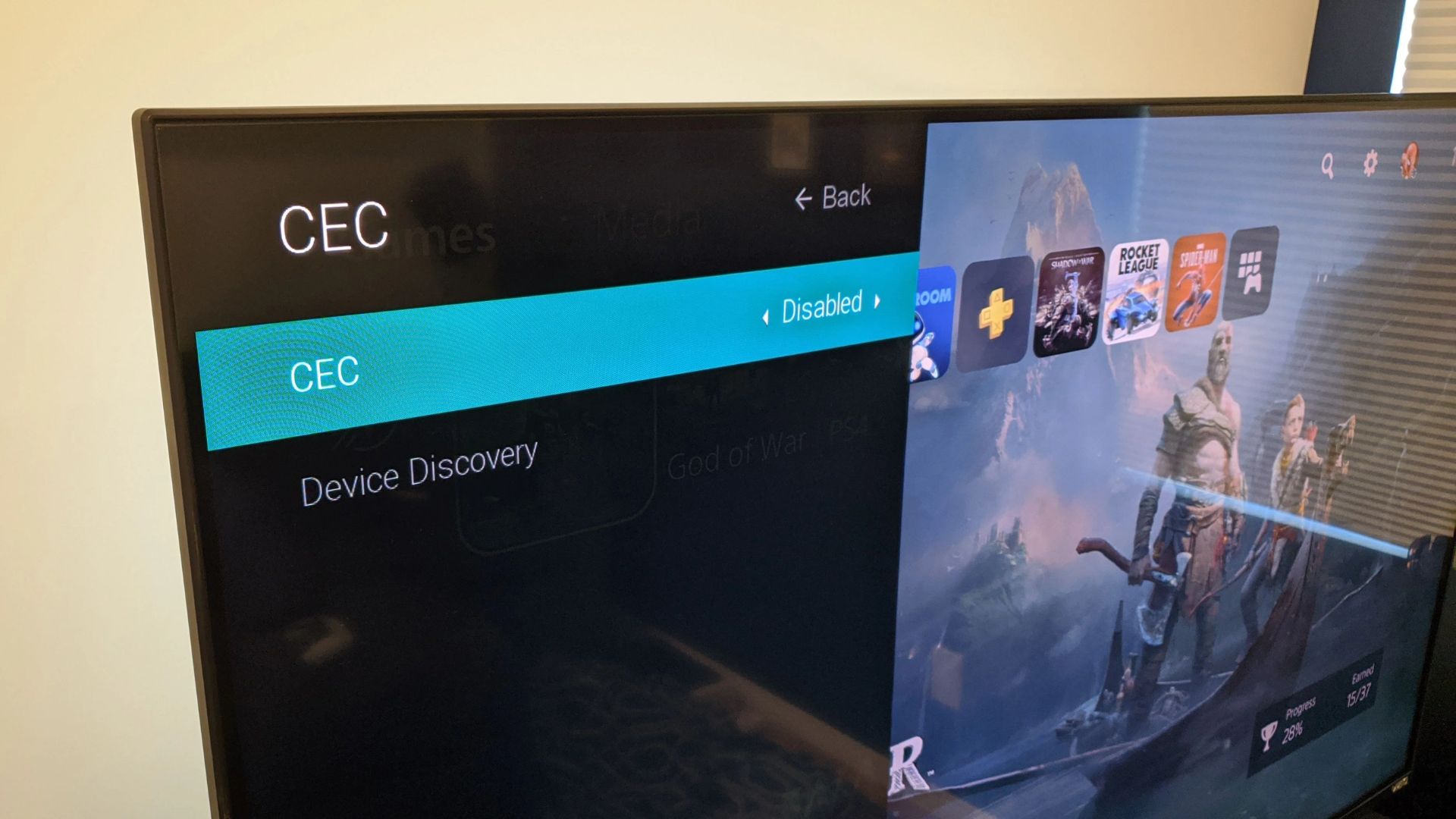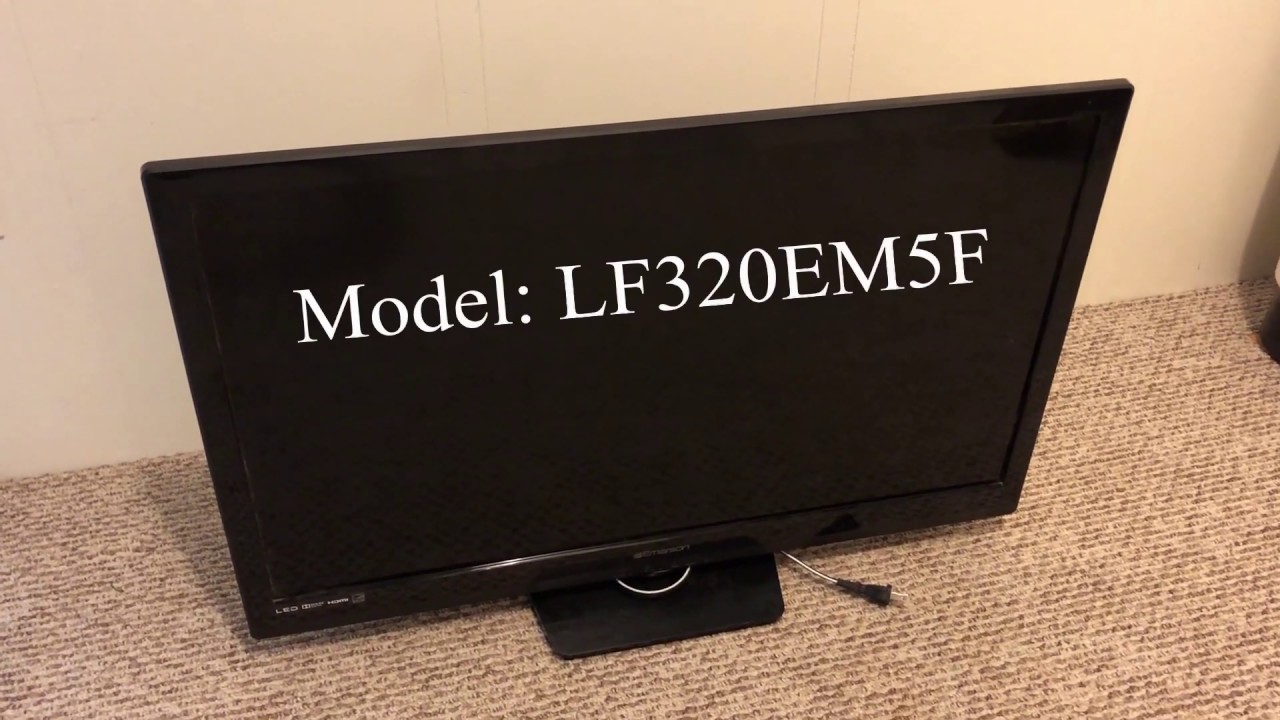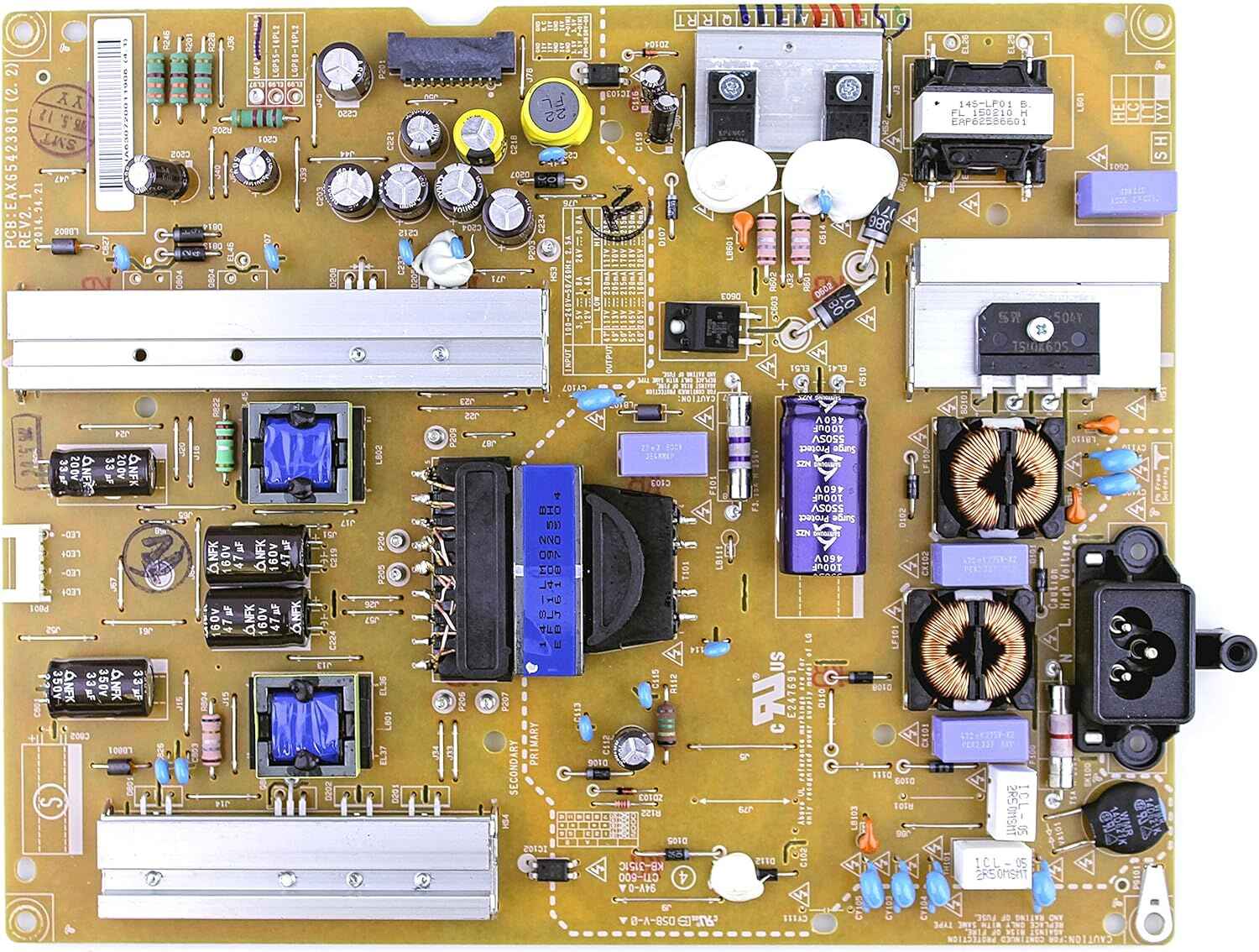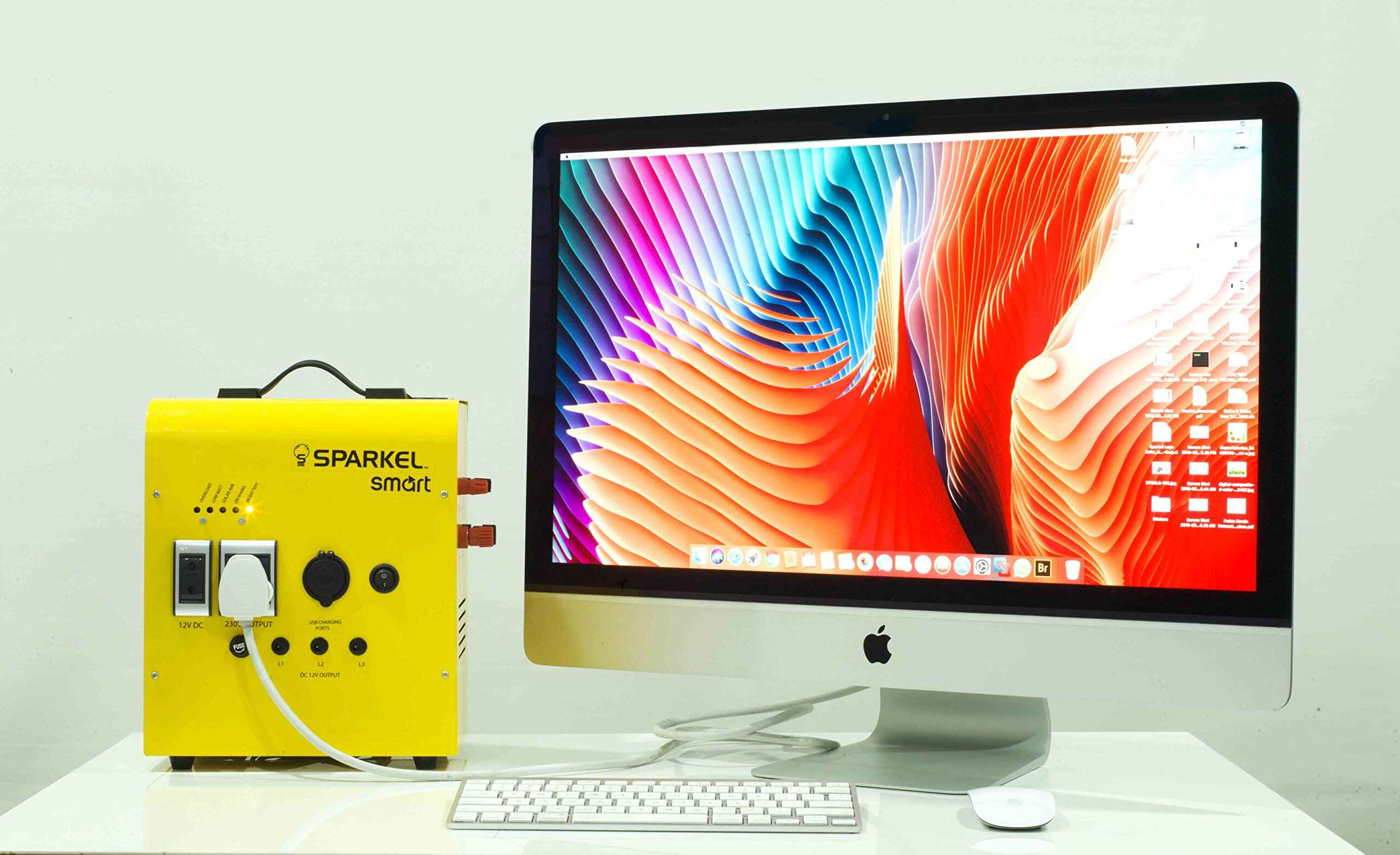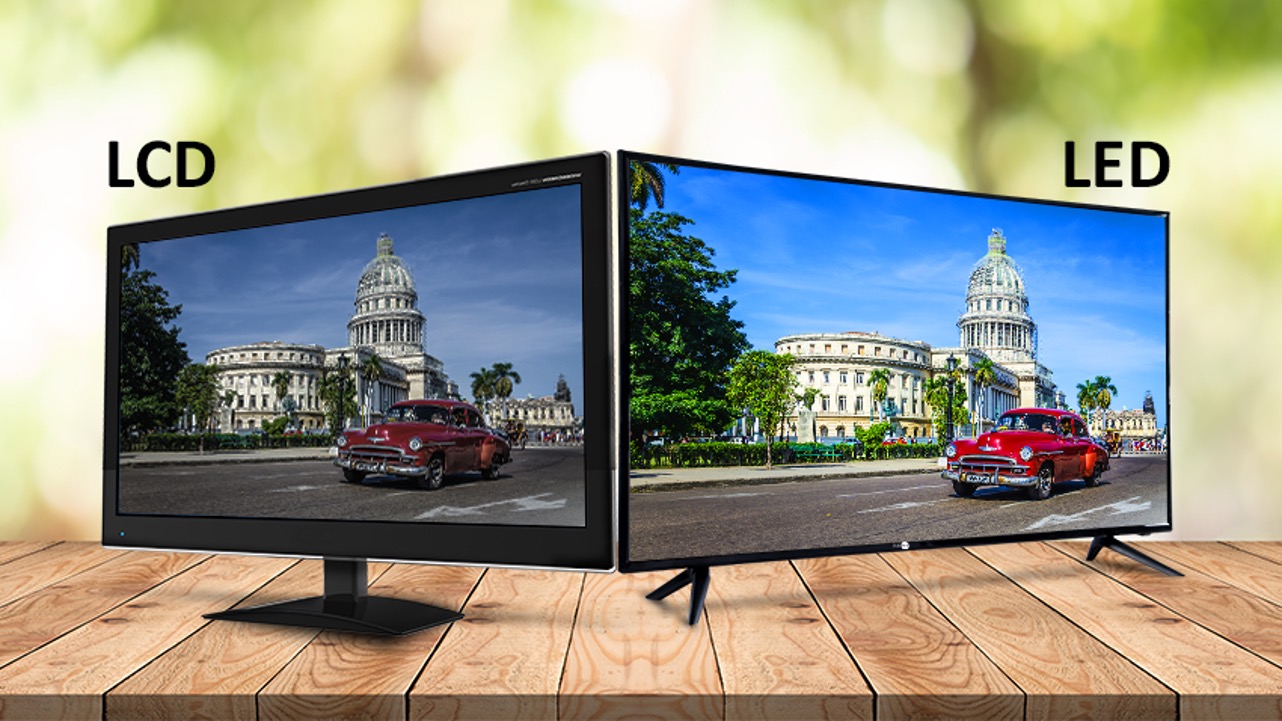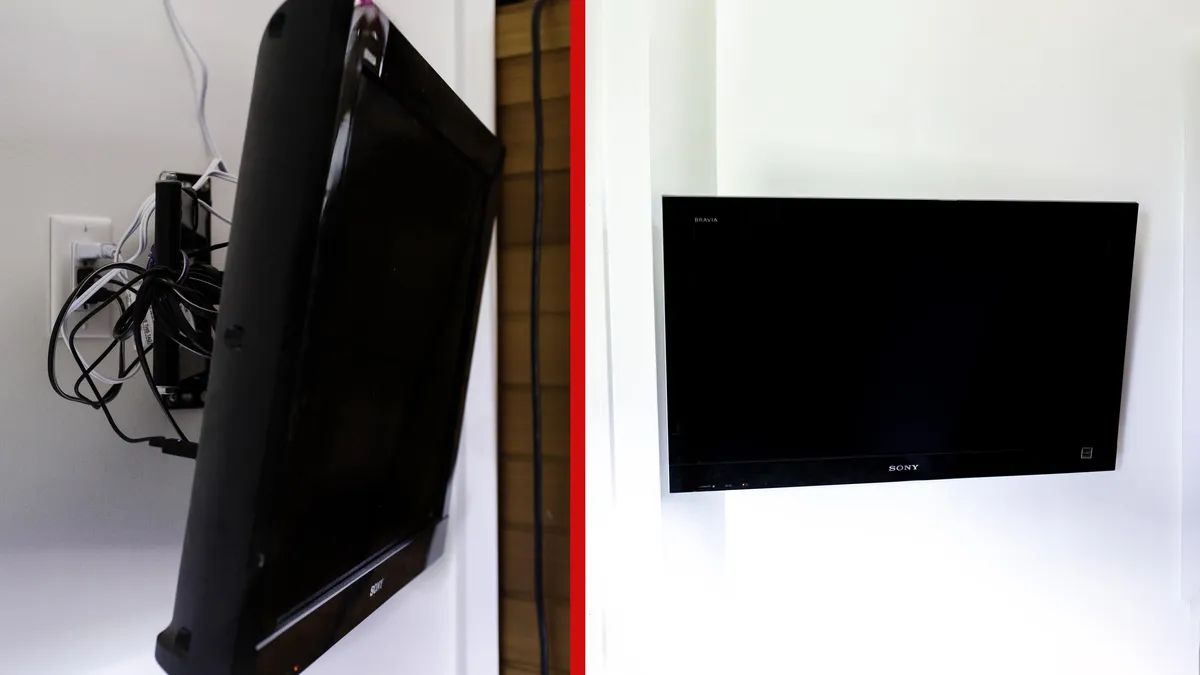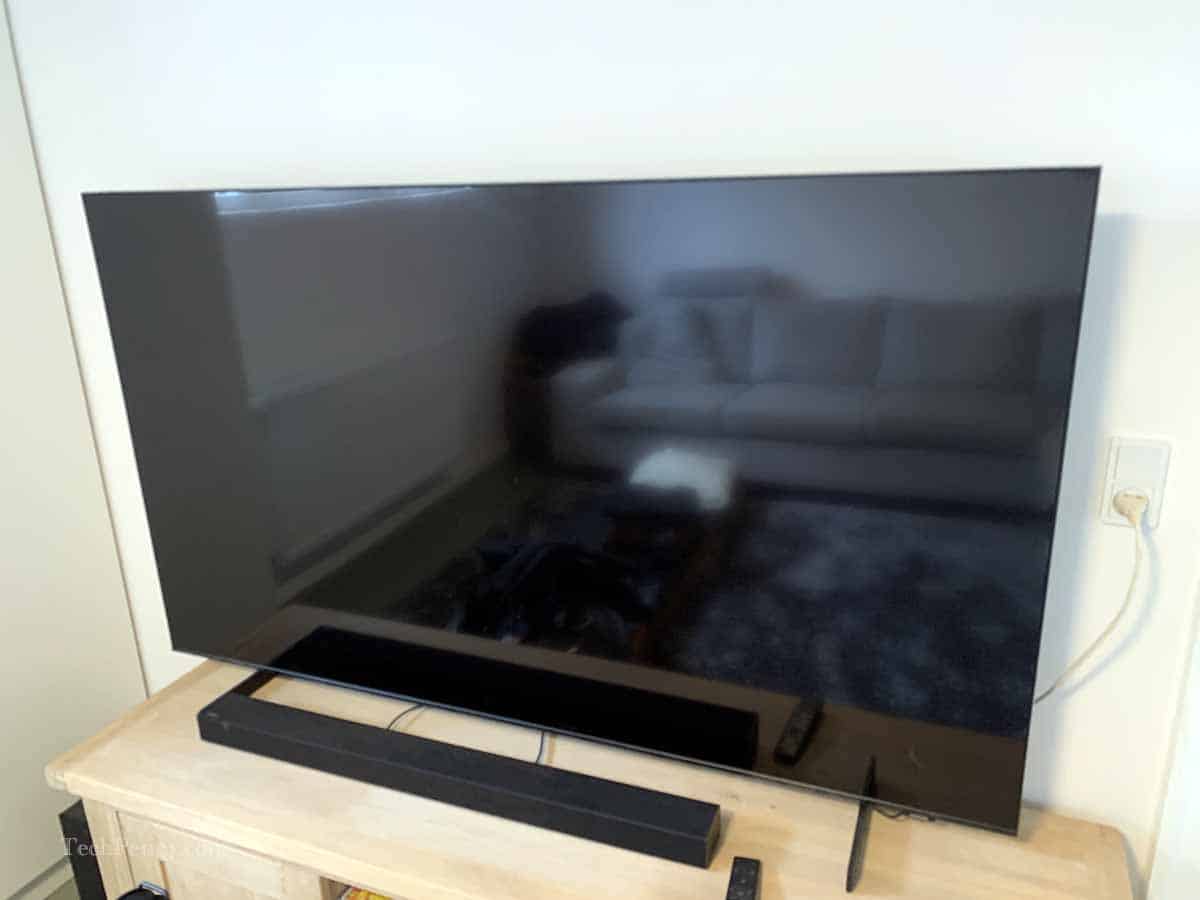Introduction
An LED TV is a popular choice for homeowners and entertainment enthusiasts due to its impressive picture quality, energy efficiency, and sleek design. However, it can be frustrating when your LED TV suddenly shuts off. Understanding the possible causes of this issue can help you troubleshoot and resolve the problem more effectively.
There are various factors that can cause an LED TV to shut off unexpectedly. In some cases, it may be due to power supply issues, overheating, faulty power adapters, loose connections, screen problems, remote control malfunctions, software glitches, or even the activation of the sleep timer or energy-saving mode. Additionally, power surges or electrical interruptions can also contribute to your TV shutting off.
In this article, we will explore these potential causes in detail and provide troubleshooting tips to help you resolve the issue and get your LED TV back up and running.
It is important to note that while some issues can be fixed easily on your own, there may be instances where professional assistance is required. If you are unsure or uncomfortable with performing any troubleshooting steps, it is always recommended to seek professional help.
Now, let’s delve into the possible causes of an LED TV randomly shutting off and explore the steps you can take to resolve each issue.
Power Supply Issues
One of the most common causes of an LED TV suddenly shutting off is related to power supply problems. The power supply unit (PSU) is responsible for supplying adequate power to the TV, and if it malfunctions, it can cause the TV to shut down.
One possible issue is a power surge or fluctuation. When the voltage supplied to the TV exceeds its normal limits, it can trigger a safety mechanism that automatically shuts off the TV to prevent further damage. In such cases, using a surge protector or voltage stabilizer can help protect your TV from power fluctuations.
Another power supply-related issue is a faulty capacitor. Capacitors are responsible for storing and releasing electrical energy, and if they fail, they cannot deliver power properly to the TV. Signs of a faulty capacitor include bulging or leaking, and they can be replaced by a professional technician to resolve the power supply issue.
Furthermore, a blown fuse can also cause the LED TV to shut off. The fuse acts as a safety measure to protect against excessive electrical currents. If the fuse is blown, it will need to be replaced with a new one compatible with your TV’s power requirements.
Loose or damaged power cords and connections can also contribute to power supply issues. Ensure that the power cord is securely connected to both the TV and the power outlet, and check for any signs of damage. If the cord is frayed or damaged, it should be replaced immediately.
To troubleshoot power supply issues, you can try the following steps:
- Check the power outlet by plugging in another device to ensure there is power.
- Inspect the power cord for any damage and ensure it is firmly connected to both the TV and the wall socket.
- If you suspect a blown fuse, consult the TV’s manual or contact a professional for assistance.
- Consider using a surge protector or voltage stabilizer to protect against power fluctuations.
Resolving power supply issues can often solve the problem of an LED TV shutting off unexpectedly. If you’ve tried these troubleshooting steps and the issue still persists, it may be necessary to consult a qualified technician for further diagnosis and repair.
Overheating
Overheating is another common cause of an LED TV shutting off unexpectedly. As electronic devices, LED TVs generate heat during operation, and if the heat is not effectively dissipated, it can lead to overheating and subsequent shutdown.
One possible reason for overheating is the accumulation of dust and debris on the TV’s vents and cooling fans. This buildup restricts the airflow, preventing proper cooling of the internal components. To prevent overheating, regularly clean the vents and fans using a soft brush or compressed air.
Placement of the TV can also contribute to overheating. Avoid placing the TV in enclosed spaces or near heat sources, such as radiators or direct sunlight. Ensure that there is adequate space around the TV for proper ventilation. Using a TV stand or wall mount that allows for airflow behind the TV can also help prevent overheating.
Faulty cooling fans can also lead to overheating. If the fans are not functioning correctly, the TV may not receive sufficient airflow, causing it to overheat. In such cases, it is advisable to contact a professional technician to inspect and replace the faulty fans.
Additionally, prolonged usage or excessive power consumption can cause the TV to overheat. If you tend to use the TV for extended periods, consider taking short breaks to allow it to cool down. Adjusting the TV’s settings, such as reducing brightness or disabling unnecessary features, can also help minimize heat generation.
To prevent or address overheating issues, consider the following steps:
- Regularly clean the vents and cooling fans to remove dust and debris.
- Ensure that the TV is placed in a well-ventilated area, away from direct sunlight and heat sources.
- Contact a professional technician to inspect and replace faulty cooling fans if necessary.
- Take breaks and reduce power consumption by adjusting settings when using the TV for extended periods.
By taking these preventive measures and addressing any existing overheating issues, you can minimize the likelihood of your LED TV shutting off unexpectedly due to overheating.
Faulty Power Adapter
A faulty power adapter can also be a culprit behind an LED TV shutting off unexpectedly. The power adapter is responsible for converting the incoming electrical power to the appropriate voltage and providing a stable power supply to the TV.
If the power adapter is malfunctioning or damaged, it can cause disruptions in the power supply, resulting in the TV shutting off. Signs of a faulty power adapter may include flickering or dimming of the TV screen, intermittent power loss, or a burning smell. In such cases, replacing the power adapter with a new and compatible one is necessary to resolve the issue.
It is important to ensure that the replacement power adapter matches the required specifications of your TV in terms of voltage, current, and connector type. Using an incompatible power adapter can damage the TV or pose a safety risk.
In some instances, power adapter issues may also be related to the power cord or the outlet. Check for any signs of damage on the power cord and ensure a secure connection to both the TV and the power source. If the issue persists, try plugging the TV into a different outlet to rule out any potential issues with the power source.
If you suspect that the power adapter is faulty, it is recommended to take the following steps:
- Inspect the power cord for any damage or fraying and ensure it is securely connected to both the TV and the power outlet.
- If possible, test the TV with a different power adapter of the same specifications to see if the issue is resolved.
- Check for any signs of damage or overheating on the power adapter itself. If any are found, replace it with a compatible replacement.
- When replacing a power adapter, ensure it matches the required voltage, current, and connector type specified for your TV.
By addressing any issues with the power adapter and ensuring a stable power supply, you can help prevent your LED TV from unexpectedly shutting off due to power supply disruptions.
Loose Connections
Loose connections can often be the reason why an LED TV shuts off unexpectedly. Various connections within the TV, such as HDMI cables, power cords, and audio/video cables, need to be firmly and securely attached for proper functioning.
A loose power cord connection can lead to intermittent power loss, causing the TV to shut off. Ensure that the power cord is securely plugged into both the TV and the power outlet, without any looseness or wobbling. If necessary, try using a different power outlet to rule out any issues with the outlet itself.
HDMI cables, which are commonly used to connect external devices to the TV, can also cause intermittent issues when the connection is loose. Ensure that the HDMI cables are securely inserted into both the TV and the connected devices. Check for any signs of damage or frayed cables, which may affect the connection quality.
In addition to power and HDMI connections, it is important to check other audio and video input/output cables for any loose connections. Make sure that all cables are firmly attached to their respective ports on the TV and the connected devices, such as cable boxes, gaming consoles, or DVD players.
In some cases, the issue may not be with the TV’s connections but instead with the wall plate connections or the signal source. If you are using cable or satellite TV, ensure that the connections at the wall plate and cable/satellite box are secure and properly tightened.
To address loose connection issues, consider the following steps:
- Check the power cord connection and make sure it is securely plugged into both the TV and the power outlet.
- Inspect the HDMI cables for any damage or loose connections and ensure they are tightly plugged into the TV and the connected devices.
- Verify that all audio and video input/output cables are securely attached to their respective ports.
- For cable or satellite TV, check the connections at the wall plate and cable/satellite box for tightness and proper alignment.
By ensuring all connections are tight and secure, you can eliminate loose connection issues as a possible cause of your LED TV randomly shutting off.
Screen Issues
Screen issues can also be a contributing factor when an LED TV shuts off unexpectedly. Problems with the display can range from minor glitches to more serious hardware malfunctions.
One common screen issue is a black screen or no display. This can occur due to a faulty video input, incorrect input selection, or a malfunctioning display panel. Start by checking the input source and ensuring that the correct input is selected on the TV. Try disconnecting and reconnecting the HDMI or other video cables to ensure a secure connection. If the issue persists, it may indicate a problem with the display panel or the internal video circuitry, requiring professional assistance for repair.
Flickering or distorted images can also cause the LED TV to shut off. This can be caused by a loose or damaged video cable, a faulty graphics card, or issues with the display panel itself. Check for any loose connections and ensure that your video cables are in good condition. If the problem continues, consult a professional technician to diagnose and resolve the issue.
Another screen-related issue is a frozen or unresponsive display. If the TV’s screen is stuck on a particular image or does not respond to any input, it may be a software or hardware issue. Try performing a soft reset by unplugging the TV from the power source for a few minutes and then plugging it back in. If the problem persists, consider updating the TV’s firmware or contacting the manufacturer for further assistance.
Dead pixels or dark spots on the screen can also affect the TV’s performance. These are pixel defects that appear as small black or colored dots on the screen. While dead pixels are typically considered normal within industry standards, if there is an excessive number of dead pixels or if they are clustered in one area, it may be a manufacturing defect that requires professional evaluation and potential screen replacement.
To address screen-related issues, follow these steps:
- Ensure that the correct input source is selected and check the video cables for any loose or damaged connections.
- Try performing a soft reset by unplugging the TV, waiting a few minutes, and then plugging it back in.
- Consider updating the TV’s firmware to the latest version to resolve any software-related issues.
- If the problem persists, contact the manufacturer or a professional technician for further diagnosis and repair.
By troubleshooting and addressing screen-related issues, you can potentially resolve the problem of your LED TV shutting off unexpectedly.
Remote Control Problems
Remote control problems can also be a possible cause when an LED TV shuts off unexpectedly. Issues with the remote control can range from simple battery problems to more complex issues with the signal transmission.
First, check the batteries in the remote control. Weak or dead batteries can lead to inconsistent signaling and may cause the TV to turn off. Replace the batteries with new ones to ensure a strong and reliable signal transmission.
Ensure that there are no physical obstructions between the remote control and the TV. Objects or barriers, such as furniture or other electronic devices, can interfere with the signal transmission and result in unreliable communication. Clear any obstacles and make sure there is a clear line of sight between the remote and the TV’s receiver.
Try resetting the remote control by removing the batteries and pressing all the buttons for a few seconds before reinserting the batteries. This can help clear any temporary glitches and restore proper functionality.
If the remote control is not working at all, it may require reprogramming or synchronization with the TV. Consult the TV’s manual or the manufacturer’s website for specific instructions on how to pair or program the remote control.
In some cases, the issue may not be with the remote control itself, but with the TV’s receiver. If the TV’s receiver is faulty, it may not receive or respond to signals from the remote control. If you have tried all the troubleshooting steps mentioned above and the problem persists, it is recommended to contact the manufacturer or a professional technician for further assistance.
To address remote control problems, try these steps:
- Check and replace the batteries in the remote control.
- Clear any obstructions between the remote control and the TV.
- Reset the remote control by removing the batteries and pressing all the buttons for a few seconds before reinserting the batteries.
- If needed, reprogram or synchronize the remote control with the TV.
By troubleshooting remote control issues, you can restore proper communication between the remote control and the TV, ensuring that it does not shut off unexpectedly.
Software Glitches
Software glitches can also be a potential cause of an LED TV shutting off unexpectedly. The software running on your TV controls various functions and features, and if it encounters a problem, it can lead to unexpected shutdowns.
One common software glitch is a firmware issue. The firmware is the software embedded in your TV’s hardware that controls its operations. If the firmware becomes corrupted or outdated, it may cause the TV to malfunction or shut off unexpectedly. Check the manufacturer’s website for any available firmware updates and follow their instructions to install the latest version.
In some cases, a software update may have introduced bugs or compatibility issues that are causing the TV to shut off. If you recently performed a software update and the problem started afterward, it is worth considering rolling back the update or contacting the manufacturer for assistance.
Another possible software glitch is related to the TV’s apps or streaming services. If a specific app or service is causing the TV to crash or shut off, try uninstalling and reinstalling the app, or check for any available updates for the app. If the problem persists, it may be worth looking into alternative apps or contacting the app developer for support.
Performing a factory reset can also help resolve software glitches. This will restore the TV to its default settings, removing any potentially conflicting configurations or settings that may be causing the issue. However, keep in mind that a factory reset will erase all personalized settings and preferences, so be sure to back up any important data before proceeding.
If you suspect a software glitch, consider the following steps:
- Check the manufacturer’s website for firmware updates and install the latest version if available.
- Consider rolling back a recent software update if the problem started after an update.
- Uninstall and reinstall apps or check for available updates for problematic apps.
- Perform a factory reset to restore the TV to its default settings.
By addressing software glitches, you can potentially resolve the issue of your LED TV shutting off unexpectedly and restore normal functionality.
Sleep Timer or Energy Saving Mode
Sleep Timer and Energy Saving Mode are built-in features in many LED TVs that are designed to conserve energy and minimize power consumption. However, they can sometimes be responsible for the TV shutting off unexpectedly.
The Sleep Timer feature allows you to set a specific duration after which the TV automatically turns off. If you have unknowingly set a Sleep Timer and it is activated, the TV will shut off according to the set time. Double-check the TV’s settings or remote control for any Sleep Timer settings and ensure it is disabled or set to a duration that suits your viewing preferences.
Energy Saving Mode is another feature that can cause the TV to shut off unexpectedly. This mode is designed to reduce the TV’s power consumption by adjusting the brightness, contrast, and other settings. If the Energy Saving Mode is enabled and set to a high power-saving level, it may result in the TV powering off after a certain period of inactivity. Check the TV’s settings menu or the remote control for any Energy Saving Mode settings and adjust them according to your preferences.
In some cases, the TV might have preset sleep or energy-saving settings that are not easily adjustable. Refer to the TV’s manual or consult the manufacturer’s website for instructions on how to customize or disable these features, if possible.
It’s also worth noting that external devices, such as set-top boxes or streaming devices, might have their own sleep or power-saving settings that can cause the TV to shut off unexpectedly. Check the settings on these devices to ensure they are not conflicting with the TV’s settings.
If you suspect the Sleep Timer or Energy Saving Mode is causing the TV to shut off, consider the following steps:
- Check the TV’s settings or remote control for any Sleep Timer settings and disable or adjust them as needed.
- Review the Energy Saving Mode settings on the TV and modify them to suit your preferences.
- Refer to the TV’s manual or manufacturer’s website for instructions on customizing or disabling these features.
- Check the settings on any external devices connected to the TV to ensure their sleep or power-saving settings are not causing conflicts.
By managing and customizing the Sleep Timer and Energy Saving Mode settings, you can prevent the unexpected shutdown of your LED TV and ensure that it remains operational according to your preferences.
Power Surge or Electrical Interruption
A power surge or electrical interruption can be a significant factor in causing an LED TV to shut off unexpectedly. These events can occur due to various reasons, such as lightning strikes, voltage fluctuations, or power outages in your area.
A power surge is a sudden increase in voltage that can damage electronic devices like TVs. If a power surge occurs, it can trigger a safety mechanism in your TV, causing it to shut off to prevent further damage. To protect your TV from power surges, consider using a surge protector. A surge protector absorbs the excess voltage and diverts it away from your TV, preventing potential damage.
Electrical interruptions, such as power outages or brownouts, can also cause your LED TV to shut off unexpectedly. When the power supply is interrupted or abruptly restored, it can trigger the TV’s safety mechanisms, resulting in it shutting off. Unfortunately, there’s not much you can do to prevent power outages or brownouts. However, you can minimize the impact on your TV by using a battery backup or uninterruptible power supply (UPS). A UPS can provide temporary power to your TV during an outage, giving you enough time to safely shut it down and protect it from potential damage.
If you experience frequent power surges or electrical interruptions in your area, you may want to consider contacting an electrician to inspect your electrical system. They can help identify any underlying issues and recommend appropriate solutions, such as installing voltage stabilizers or upgrading your electrical wiring.
To address power surge or electrical interruption issues, consider the following steps:
- Use a surge protector to safeguard your TV from power surges.
- Consider investing in a battery backup or UPS to provide temporary power during outages.
- Contact an electrician to inspect your electrical system if you experience frequent power surges or interruptions.
By taking preventive measures and protecting your TV from power surges and electrical interruptions, you can minimize the risk of it shutting off unexpectedly and potentially extend its lifespan.
Conclusion
An LED TV shutting off unexpectedly can be a frustrating experience, but understanding the potential causes can help troubleshoot and resolve the issue effectively. From power supply issues and overheating to faulty power adapters, loose connections, screen problems, remote control malfunctions, software glitches, sleep timer or energy-saving mode activation, and power surges or electrical interruptions, there are various factors that can contribute to this problem.
By following the troubleshooting steps outlined in this article, you can address these potential causes and potentially resolve the issue on your own. However, it is important to keep in mind that there may be instances where professional assistance is required, especially if the problem persists or involves complex hardware or software malfunctions.
Remember to always check the power supply, ensure proper ventilation to prevent overheating, address loose connections, troubleshoot remote control and software issues, and take preventive measures against power surges or electrical interruptions. Additionally, consult the TV’s manual or contact the manufacturer for specific instructions and recommendations.
If you are not comfortable with performing troubleshooting steps or if the problem persists despite your efforts, it is always recommended to seek professional help. Technicians with expertise in TV repair can diagnose the issue accurately and provide the necessary solutions to get your LED TV working again.
By identifying and addressing the root cause of the problem, you can enjoy uninterrupted entertainment and ensure that your LED TV functions optimally for years to come.







